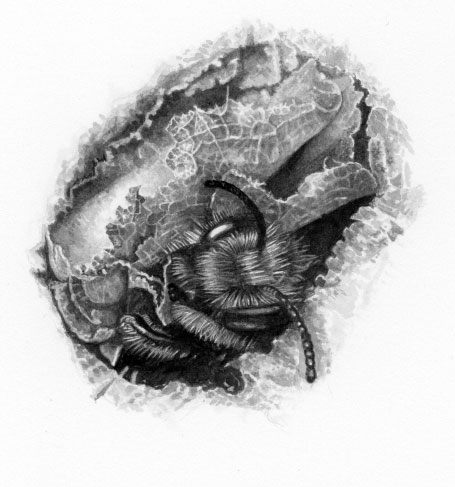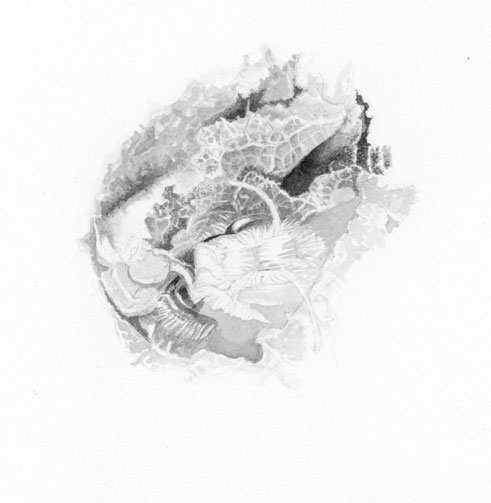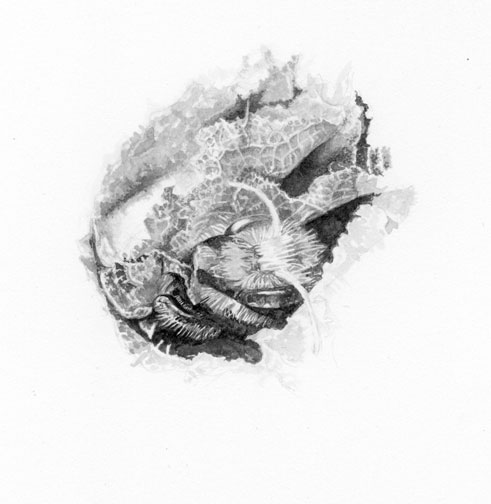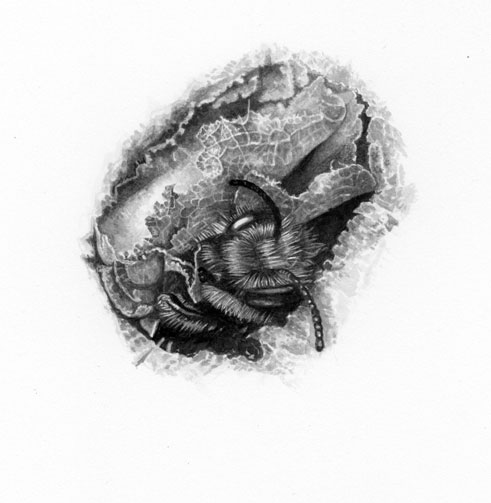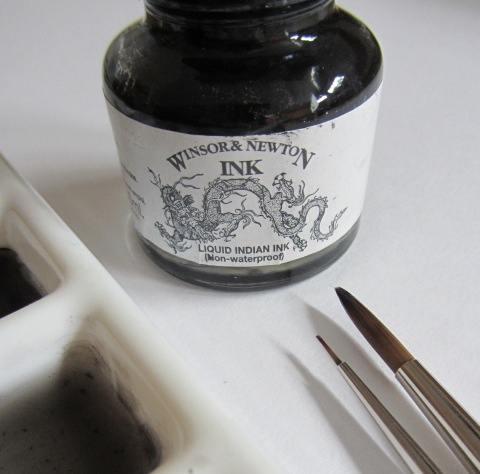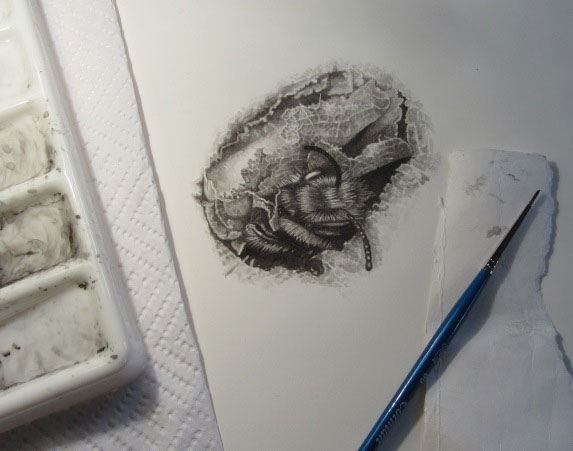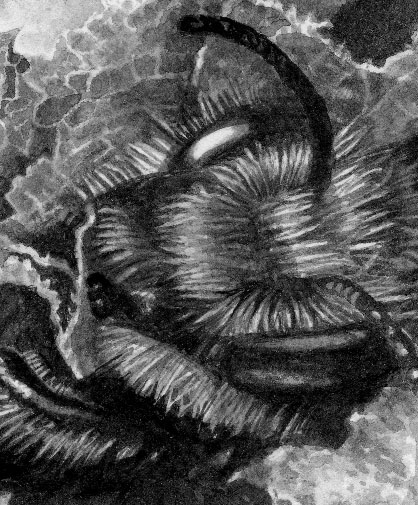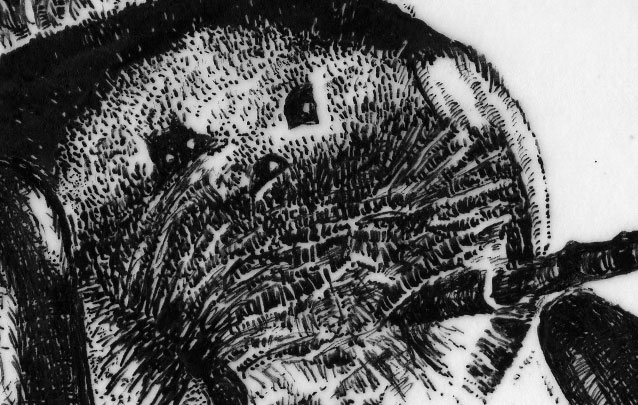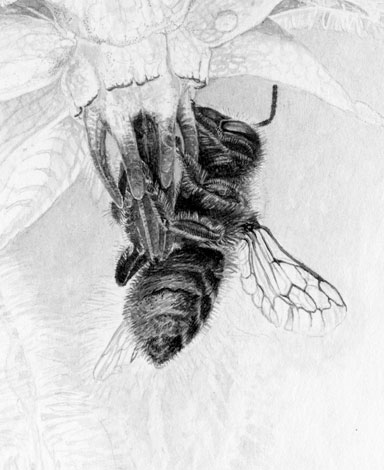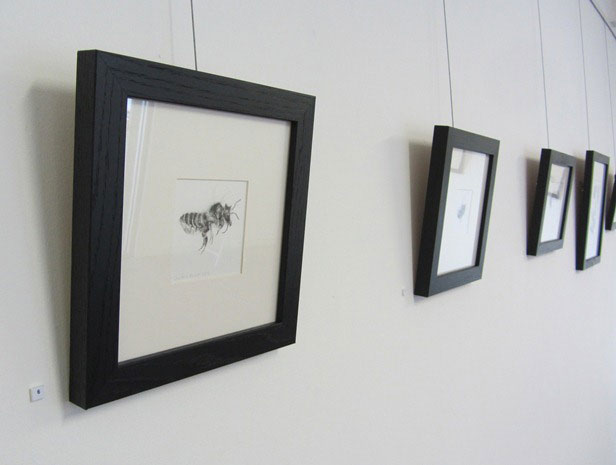“Leafcutter Bee Emerging”, 2012
Ink and brush on Fabriano paper, approx. 6″x 5″
After almost a year lived in perfect darkness inside a leaf cell, a leafcutter bee emerges into the light. First its antennae, then its eyes experiencing the world for the first time. In its jaws are the dried leaves of the cell from which the bee has just broken free. One after another the bees hatch from the leafy tubes on warm, dry days, to fly into the garden. The leafcutters in my garden were very late this year. Usually they will hatch sometime during the first week of June, but it was not until the second week of July that I heard the familiar clicking as they chewed their way out of the dried leaf cells.
Emerging, some of them seemed weak and hungry. One stumbled its’ way out of the nest, rested for a while on the ground below and then like the others flew for the nearest flowers and food. After a week or so of foraging and mating, the leafcutters will begin to return to the bee houses, and female ones will select a tube to clear of last year’s debris and begin nesting again.
Above: Progress in the drawing as layers of wash are added. Click on thumbnails above for a closer look.
The drawing is approximately 6″ x 5″, on Fabriano paper using Winsor and Newton Liquid Indian Ink diluted with distilled water and applied with small watercolour brushes. I have been practicing this technique for a while now in drawings of leaves which you can see in earlier posts and in the gallery of leafcutter bee drawings. The leaf drawings were studies from life, but for the bees I am working primarily from reference photographs taken in the garden. I begin by sketching a brief outline in pencil, and then adding an all-over extremely pale wash so that nothing of the ‘white’ paper remains. I then begin work with slightly darker washes, while the paper is still damp and the ink moves around relatively easily. Further layers of progressively darker washes are used to build up the form and add detail. I do not mix the washes using measured drops, but rather in the palette, mixing tiny amounts of ink into water as required.
Several times during the drawing I stop and allow the paper to dry more, and take the opportunity to scan a progress shot. I leave lighter areas such as the hairs on the face and highlights in the eye with only a pale wash, painting around them. Occasionally I have used Chinese White to add in highlights, but not on this particular drawing, where the lighter parts are all reserved from the ink. Towards the end of the drawing I add more and more ink to the darkest areas, using a drier brush.
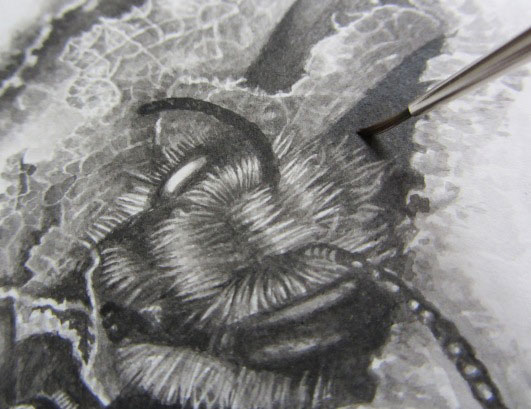
You can read an interview with me in Bee Mentor which looks at my interest in leafcutter bees, but also covers my drawing techniques and practice, and my photography. And you can read more about my the techniques I used to draw the bees on this page on the lives of leafcutter bees.
| Home | About | Contact | Galleries | Subscribe to Blog |
